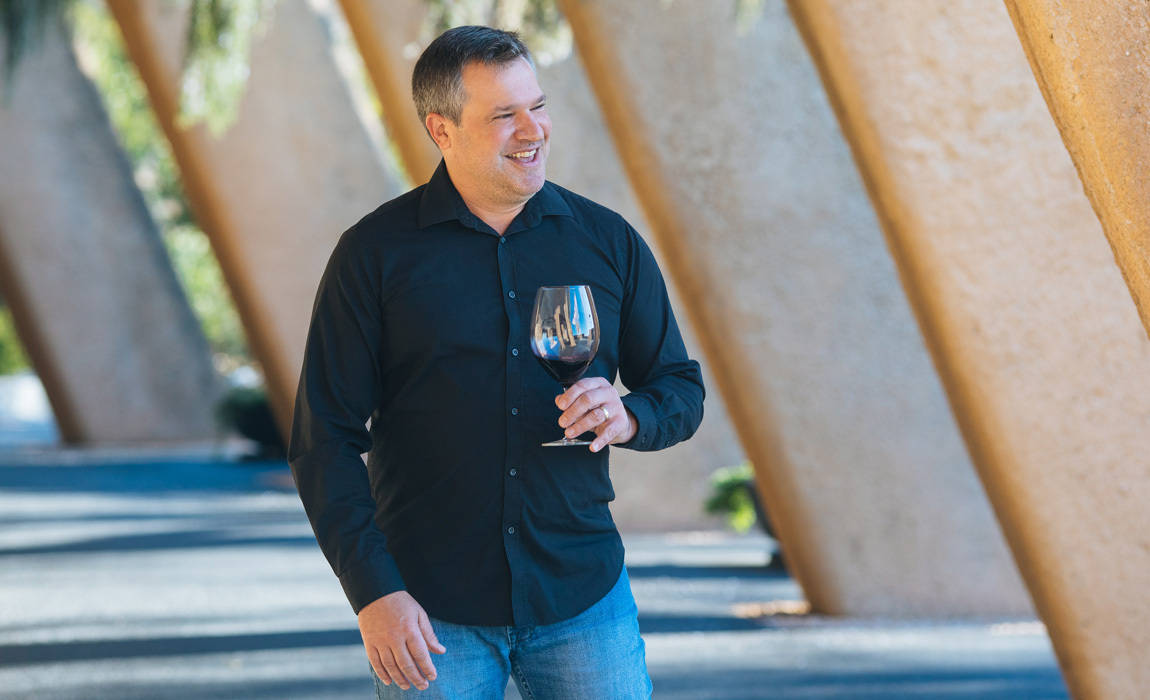One of the most misunderstood aspects of enjoying fine wines is the concept of aging. To an extent, we all know that most wines need to be aged a certain amount of time before they are ready to drink - but beyond this, it almost seems to be the realm of magic and folklore. To help us all better understand the concept of cellaring wine, we had a chance to chat with Marcus Notaro, Head Winemaker of the legendary Stag's Leap Wine Cellars.
California wines today are recognized as being among the best to be found anywhere in the world. In particular, the Napa Valley growing region has a certain level of prestige for having produced many of the world's best Cabernet Sauvignon vintages over the past 50 years. If there's one winery that put California on the map, though - it's Stag's Leap Wine Cellars.
You may have watched the 2008 movie "Bottle Shock", where in 1976, a California wine defeated the best available in France. Well ... the winery that produced the winning 1973 Cabernet Sauvignon was none other than Stag's Leap Wine Cellars.
I once thought that aging was something pretentious but over the years, my own journey has led me to place certain favorite bottles away to mature but not every wine is right for this treatment, so let's learn more about how men need to know about aging or cellaring wine!
We all know the phrase that someone "ages like a fine wine" but even among enthusiastic wine drinkers, few men actually understand what that means. Is older wine that much better?
Not all wine is designed to age. In fact, some wines lack the complexity to benefit from time in the cellar. Fine, complex wines such as Stag’s Leap Wine Cellars Cabernet Sauvignons open up over time. This means that while aging in the cellar, the layers of flavors and aromas mature, creating more depth of flavor and allowing the wine to show off characteristics that aren’t present shortly after bottling.
What factors go into producing a wine that is worth cellaring?
The production always starts in the vineyard; our estate vineyards sit in a valley where the cool air collects and allows the grapes to slowly ripen, creating a balance between acid and sugar. In the winery, we ferment our wines to extract the optimal amount of fruit and structure, and age our wines in oak barrels while continuing to monitor and blend, creating wines with deep, complex flavors. Once cellared, these wines continue to evolve, and as the brighter, younger flavors dissipate, and the darker, more complex flavors emerge.
Are certain varietals better suited for aging?
Cabernet Sauvignon, specifically grown in Napa Valley, is the perfect grape for aging because of the flavors and aromas inherent in the grape that give it structure and feel. The tannins and acid are not overpowering, so a Cabernet can be enjoyed young, but also provide enough structure to sustain a long time in the cellar. As those secondary and tertiary flavors evolve during cellaring, the complex earthy and herbal flavors, the fruit characteristics and tannic structure are still discernable.
If you don't have the right space or equipment for a wine cellar - or just don't want to wait - can you buy a 10-year old cab for instance? One that has been aged in the proper conditions instead of a newer release from 2019.
Absolutely! We do occasionally open the Stag’s Leap Wine Cellars “Legacy Cellar” so you can purchase older vintages which we’ve been cellaring at the winery under our expert care. To access this year’s Legacy Cellar, anyone can sign up at this link, we’ll have wines dating as far back as 1994 released throughout December, including wines from each of our estate labels, FAY, S.L.V. and CASK 23, and even large formats!
Speaking of that 2019 FAY Cabernet Sauvignon that I have my eye on, if I bought that, should I enjoy it now or put it away to enjoy at some point in the future when it is "ready"?
You should do both! The 100-point FAY 2019 Cabernet Sauvignon, like all of our wines, is designed to be enjoyed both at release and to evolve over time. To understand how wines age, I always recommend purchasing wine in quantities of three, so you have a bottle to enjoy now, a bottle to cellar 6-7 years and another for even longer. Saving that wine for a special occasion, anniversary or birthday, that last bottle will showcase the depth and complexity of a cellared Stag’s Leap Wine Cellars Cabernet Sauvignon, the wines in the 90’s are at their “peak” today and I expect our more current vintages to be great for even longer.
What is in your personal cellar that you can't wait to open and share with friends?
I love Cabernet Sauvignon and Tenuta from Col Solare on Red Mountain in Washington state is something fun to pull out of my cellar. I also have an affinity for Italian wine and enjoy Tignanello, Pian delle Vigne Brunello di Montalcino and I love Barolo. In fact Bruno Giacosa Barolo was one of the first wines that really grabbed my attention as a waiter in my early 20’s just starting to try other wines,
